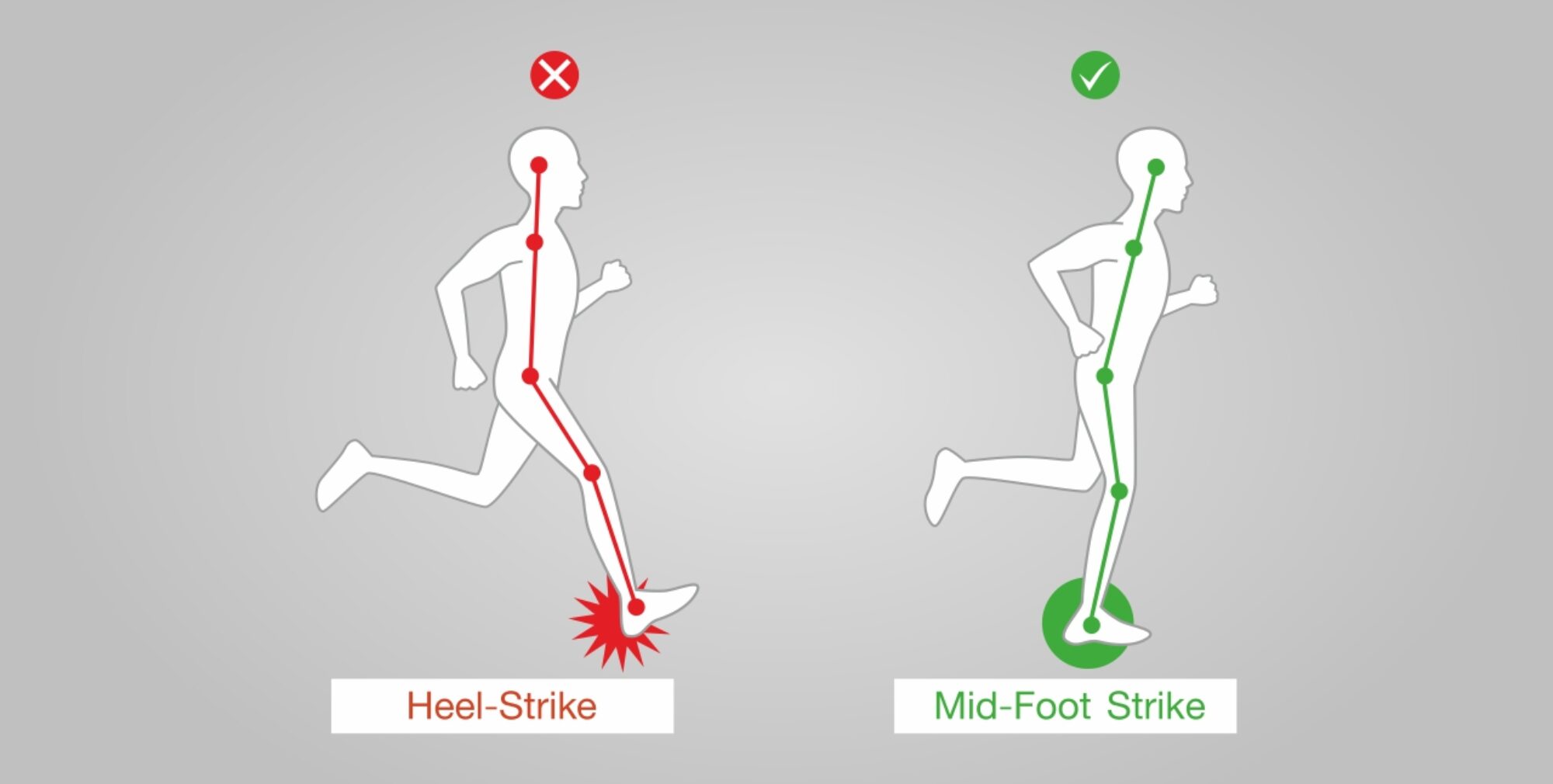Running is a complex movement that involves the coordinated action of many different muscles and joints. The science of motion while running, or running biomechanics, is the study of how these different components work together to propel us forward.
There are three main gaits, or running styles, that runners use: heel striking, midfoot striking, and forefoot striking. Each gait has its own unique biomechanical characteristics.
Heel striking is the most common running gait. In heel striking, the runner’s heel makes contact with the ground first. This is followed by a rolling motion of the foot, from the heel to the toe. Heel striking is generally considered to be the least efficient running gait, as it produces a lot of impact forces. However, it is also a relatively stable gait, which can make it a good choice for new runners or runners with injury concerns.
Midfoot striking is a more efficient running gait than heel striking. In midfoot striking, the runner’s foot makes contact with the ground with the midfoot and heel at the same time. This helps to reduce impact forces and improve running economy. Midfoot striking can be a good choice for runners who are looking to improve their speed or endurance.
Forefoot striking is the most efficient running gait, but it is also the most challenging to master. In forefoot striking, the runner’s foot makes contact with the ground with the ball of the foot or the toes first. This gait produces the least amount of impact forces, but it also requires a lot of strength and flexibility in the ankles and calves. Forefoot striking can be a good choice for experienced runners who are looking to improve their speed or endurance.
Science of motion while running: 3 gaits
The science of motion while running can be used to explain the biomechanical differences between the three gaits.
Heel striking
When heel striking, the runner’s foot makes contact with the ground with the heel first. This causes a large impact force to travel up the leg and into the spine. Heel striking also tends to produce a longer stride length, as the runner’s foot has to travel further to reach the ground.
Midfoot striking
When midfoot striking, the runner’s foot makes contact with the ground with the midfoot and heel at the same time. This helps to reduce impact forces and improve running economy. Midfoot striking also tends to produce a shorter stride length, as the runner’s foot doesn’t have to travel as far to reach the ground.
Forefoot striking
When forefoot striking, the runner’s foot makes contact with the ground with the ball of the foot or the toes first. This produces the least amount of impact forces, but it also requires a lot of strength and flexibility in the ankles and calves. Forefoot striking also tends to produce the shortest stride length, as the runner’s foot doesn’t have to travel as far to reach the ground.

Which gait is best for you?
The best gait for you depends on a number of factors, including your running experience, fitness level, and injury history. If you are a new runner, or if you have injury concerns, it is generally recommended that you start with heel striking. Once you have gained some experience and improved your fitness, you can experiment with midfoot striking and forefoot striking to see what works best for you.
It is important to note that there is no one-size-fits-all answer to the question of which gait is best. The most important thing is to find a gait that feels comfortable and allows you to run efficiently and injury-free.
How to improve your running gait
If you are interested in improving your running gait, there are a few things you can do:
- Start slowly. If you are new to midfoot or forefoot striking, start by gradually transitioning to the new gait. You can do this by running short distances with the new gait, and then gradually increasing the distance and speed over time.
- Focus on your form. When running with a new gait, it is important to focus on your form. Make sure that you are landing with your foot directly below your body, and that you are not overstriding.
- Strengthen your ankles and calves. Midfoot and forefoot striking require strong ankles and calves. You can strengthen these muscles by doing exercises such as calf raises and ankle circles.
If you are unsure how to improve your running gait, it is a good idea to consult with a running coach or physical therapist.

